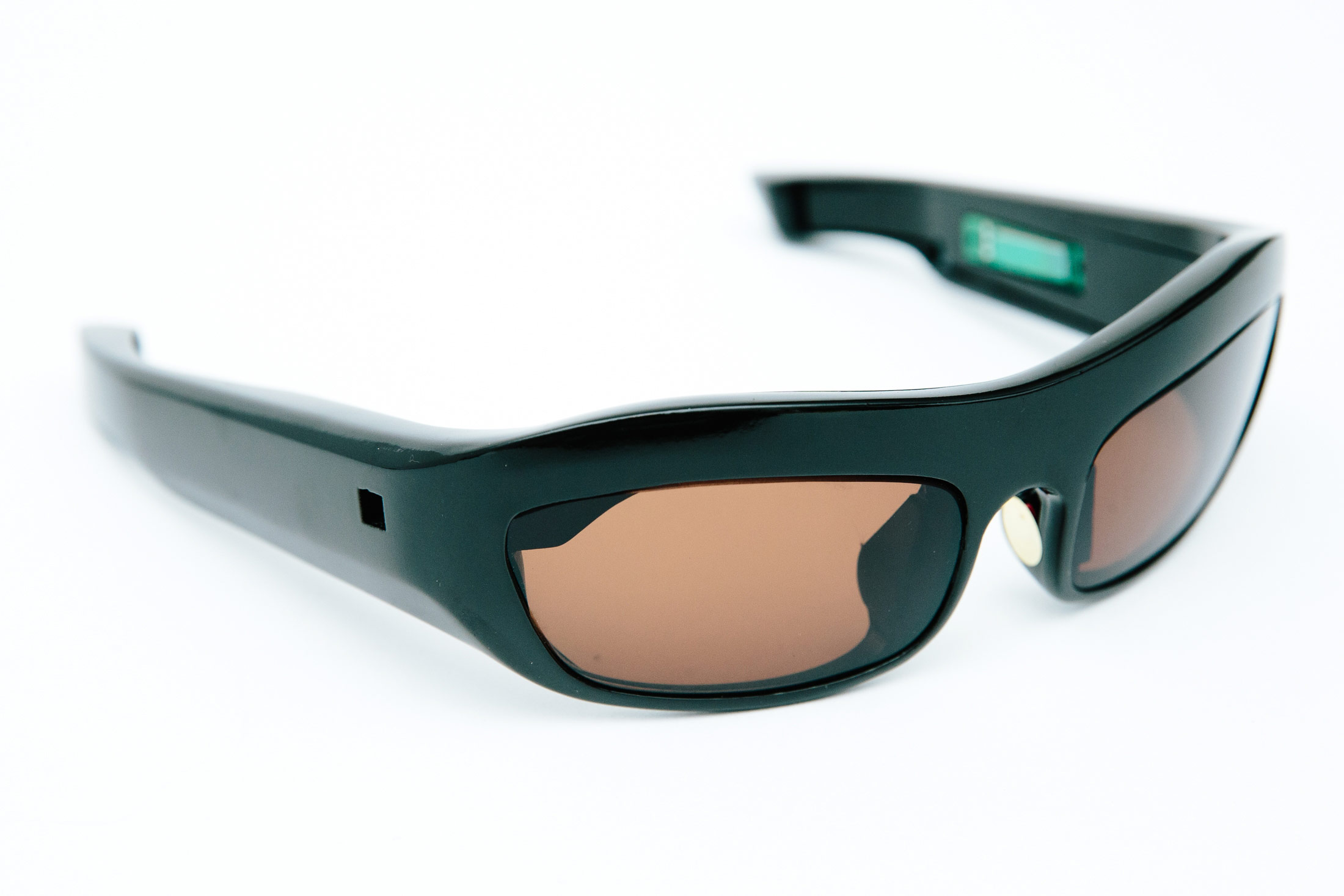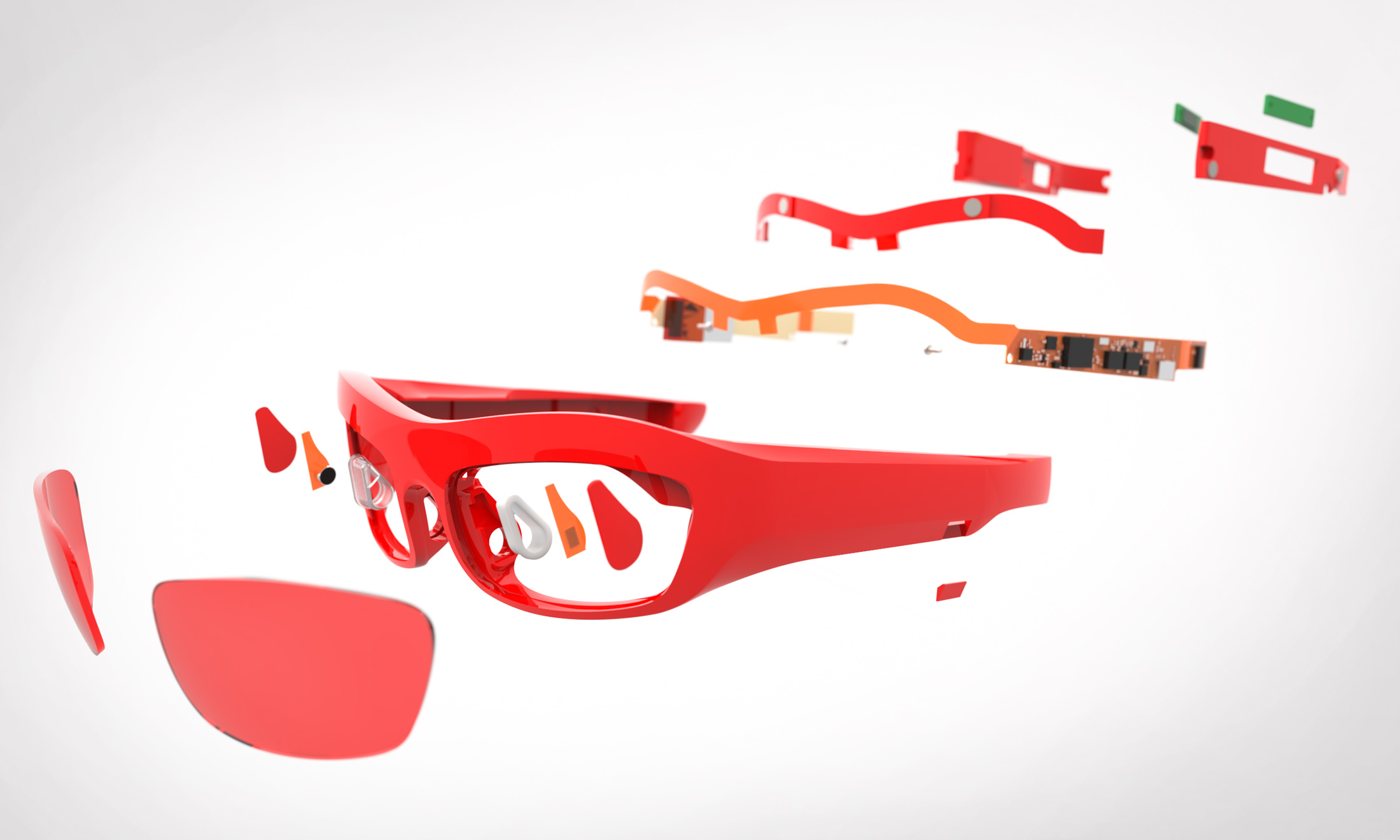Intel x Chalayan Paris Fashion Show
– 2016 –
Industrial Design & Mechanical Engineering
This project explores the design of biometric-sensing smart glasses for Chalayan's 2016 Paris Fashion show.
– 2016 –
This project explores the design of biometric-sensing smart glasses for Chalayan's 2016 Paris Fashion show.
Hussein Chalayan is famous for pushing the fashion industry forward with the use of interesting materials and technologies. His runway shows are known for telling thought provoking stories and 2016 was no different. For this show he teamed up with Intel's Innovation group to create something completely new: a pair of biometric-sensing smart glasses and video-projecting belt. His vision was for the glasses to monitor the model's stress levels, send that data to the belt, and have the belt project a visual representation of the model's stress in real time. This kind of realtime stress visualization made for a more intimate and vulnerable connection between the audience and models during the show. It also proved that fashion can enhance life, not just decorate it.
I worked on this project during my time at the product design consultancy D2M. While Intel was tasked with designing the underlying electronics and algorithms to make this project a reality, they contracted D2M to assist with much of the design, mechanical engineering, and production of the glasses and belts. I was personally responsible for the design and engineering behind the glasses. After receiving Intel's circuit board and Chalayan's sketches, I began the process of turning them into a real product.
Chalayan had a unique vision in mind for these glasses. He was after something reminiscent of '90s wrap around sport sunglasses but with a more elegant feel. Something sleek but also tasteful. In terms of color, he gravitated towards tortoise shell and rich dark browns. And as for the finish, he was looking for a crisp, glossy shine. Overall I got the sense that he wanted the glasses to convey a sense of “speed”.
The real challenge with the industrial design involved creating a streamlined form that fully encapsulated the internal electronics. The frame required a noticeable thickness due to the circuit board and battery, and, because of the tight timeline on this project, there was no time to modify the layout of the circuit board to optimize it for a sleeker package. As a result, I explored various lens shapes and frame proportions in an effort to disguise the thickness of the product. The final design that I honed in on used strategic tapering and purposeful thicknesses to give the illusion of a thinner product. The design looked sporty and streamlined despite being thicker than a normal pair of glasses.
This project required a lot of prototyping to hone in on a frame that looked stylish and captured Chalayan's vision. My first step involved importing Intel's circuit board into SolidWorks and bending it into shape. With the underlying circuit board mapped out I then designed the glasses form around the electronics components. This was an iterative process of designing a form, 3D printing it to better understand how it looked and fit the face, and making informed adjustments. Helping provide feedback on the adjustments was experienced eyewear designer Steve Jarvis. Intel put me in contact with him to learn the basics of sunglasses design and guide the early design refinements. His insight was crucial for the rapid success of this project and gave me a better eye for designing the crisp surfaces of sunglasses frames.
After honing in on a final design in SolidWorks, it was time to confirm that the product would meet all expectations. I was able to quickly confirm that the PCBA, lenses, nose pads, and EEG electrodes would properly fit in the glasses with the help of an FDM 3D print. We then ordered a high resolution SLA 3D print of the glasses so Intel could wire up their electronics and test the product’s usability before we manufactured the final product. After some slight tweaking, this final prototype was confirmed to fit and work as designed. With that, we ordered the final production run for Chalayan’s fashion show.
The final frame design was comprised of four parts: the main outer frame and three inner covers. These inner covers attached to the outer frame via magnets to make accessing the circuit board easy. Given the high-profile nature of the project, it was imperative that the circuit board be accessible for last minute changes leading up to the show. We also decided to use high resolution SLA prints for the final production run because of the tight timeframe and constant tweaks being made just before the show.

While the form of the glasses look great, what truly makes them unique is Intel's underlying circuitry (colored orange above). Buried inside the nose pads of the glasses are a tiny microphone to measure breathing and a heart rate monitor to measure heart rate. There are also three strategically placed EEG electrodes embedded around the frame to measure asymmetrical brainwave activity. It is the combination of these components' data that allows Intel's algorithm to interpret the model's stress levels in real time.

The final design and Chalayan's show were so successful that The Design Museum in London featured the glasses and belt in a new exhibit shortly after Paris Fashion Week. The exhibit featured installations from the most innovative and thought-provoking designers working today and was on display for five months.





